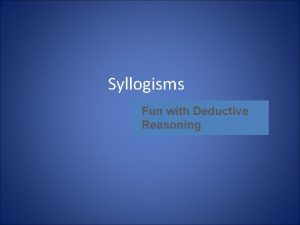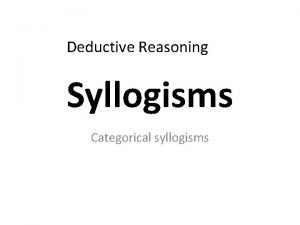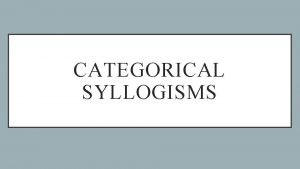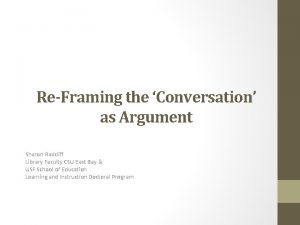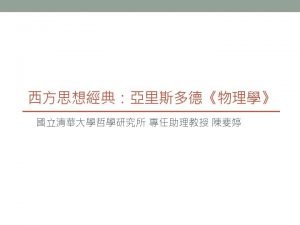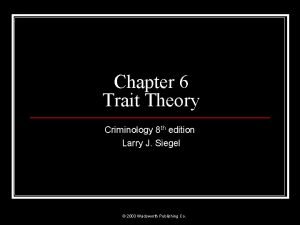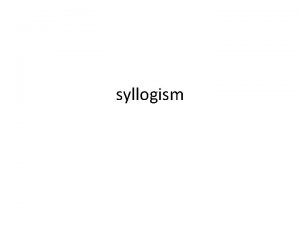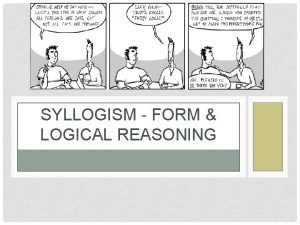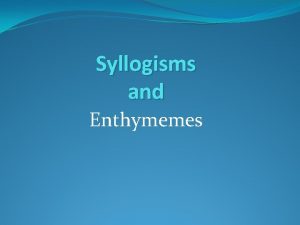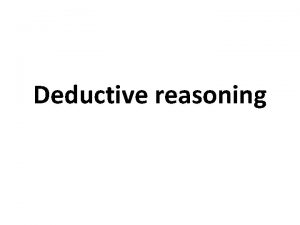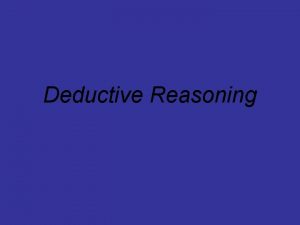Deductive Argument Aristotelian syllogism Major premise minor premise






- Slides: 6

Deductive Argument Aristotelian syllogism: Major premise, minor premise, conclusion All men are mortal. Socrates is a man. Therefore Socrates is mortal. In politics and ethics could change to general good, particular event, evaluation to event Major danger: False premise

Examples of Deductive Structures Establish what a classroom is for, note a deficiency in a given classroom, advocate a solution that moves towards the good classroom Establish what a team captain is for, note the relative proximity of potential team captains to that ideal, advocate the captain closest to the ideal Establish the character of democracy, note the character of an organization, state that the organization is or is not a democracy Establish what a church is supposed to be, note the particular character of a given church, evaluate its goodness or badness as a church

Inductive Argument Begins with observation, then notes patterns and common threads between the entities observed Gilmour has two hands, one at the end of each arm. Most of the people at Emmanuel College have two hands, one at the end of each arm. Therefore people tend to have two hands, one at the end of each arm. In politics or ethics, could begin with manifestations of a policy and move towards analysis or evaluation of policy Major danger: False generalization

Examples of Inductive Structures Relate accounts of people's involvement in intercollegiate sports and draw conclusions about its psychological effects. Relate people's opinions about dining hall food and advocate changes to make it better. Observe people's tendencies to walk or ride in cars based on distance from point to point and evaluate people's relationship with exercise. Relate incidents from the tenure of a leader-figure and advocate her or his removal or extension of her or his tenure.

Cause/Effect Argument Begins with causes and moves towards effects Renders, explicitly or implicitly, the goodness or badness of effects In politics or ethics, often involves proper location of blame Major danger: False causality

Examples of Cause/Effect Structures Set up the event of and conditions surrounding a Supreme Court decision and note where the ensuing events ran counter to its stated intent. Set up the event of a bad candidate's rise to power and trace the effects of that choice. (This works much better for history than for prediction. ) Set up the event of an Emmanuel College policy and note the character of its fallout.
